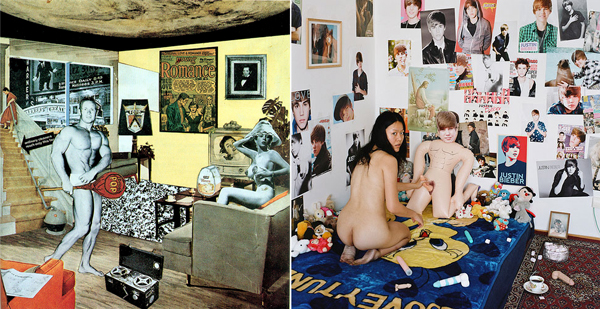Just What Is It That Makes Today’s Media So Different, So Appealing?
As any illustrator should be, I am obsessed by visual culture, art, design and media. The way contemporary creative conception and expression takes on new shapes and forms, catapulted through the fibre-optic network and available for all to consume, is interesting and exciting. New media have provided our visual culture with an array of new tools (hard- and software), new platforms for graphic and video editing, and new platforms to connect and share all this content. All of which bring with it new cultural standards, set in code.
Social media and ubiquitous computing have empowered the social status of the digital natives to that of prosumers and produsers. Collaboration is favoured over copyright in what Henry Jenkins calls participatory culture. What are the implications of these shifts for the amateur and the professional, the culture industry, cultural education, formal art education?
Digital natives are growing up with cameras and sophisticated hard- and software, so the consumption as well as the production of visual culture also becomes native to them, just as sharing and collaborating is the social standard in participatory culture. The amateur stuff that previous generations kept hidden away in shoe-boxes are now out in the open and have become an integral part of our visual culture. We live in public.
Most of these digital natives, exposing themselves on their Myspace or Facebook profiles, will not become professional photographers or visual artists. Myspace profiles littered with animated gifs and unreadable text set in comic sans will make most web-designers cry, however it’s through networked collaboration and experimentation that the produsers of these pages are actually learning how to write (copy-paste) HTML and javascript. They adapt the code to fit their needs and are able to creatively express their deepest feelings about something that really matters, like.. Justin Bieber.
Sites such as Deviantart, Flickr, Vimeo and Youtube function as social and educational environments for digital natives. Deviantart is a great place for artists of all trades and ages, amateur and professional alike, a place for social interaction around every aspect of the creative process. These platforms offer great potential as a learning environment for formal art education, cultural education and media literacy.
A large portion of the Deviantart database is filled with what is known as (amateur) fan art. It is a balanced mix of traditional (digitized) media and all digital media. The content of this fan art is based on appropriation of popular culture. This fan art can frustrate traditional media outlets that will not shy away of sueing young individuals for infringement of copyrighted material. Star Wars is case in point here. Other issues surrounding copyright arise from the practice of remixing and mashing-up of (audio)visual content. Copyright legislation can stall artistic expression and the development, as Lawrence Lessig points out in his book Remix (2008).
The exchange of skills through tutorials is also prevalent on Deviantart. They range from amateur to professional level and mostly focus on technical aspects. Software instructions that visually guide the user through a series of steps to perform certain actions. The software can be open source, freeware or an illegal copy of the industry standard, easily obtained through various p2p-networks. The latter option might be considered piracy (or a higher level of media literacy), companies that set the industry standard are prone on luring in new users. What better way to do that, than by offering your proprietary software for free (at least for non-commercial use).
The countless visual memes the Internet has generated over time are additions to our collective cultural archive, though it’s doubtful (not impossible) their status will easily upgrade from meme to icon. Ranging from archives of de-motivational posters to collections of self-shot duck-face portraits, the Internet does not care if it’s ‘art’ or not, it gets archived and becomes part of our digital heritage overnight. Ready to be appropriated with the next click.
